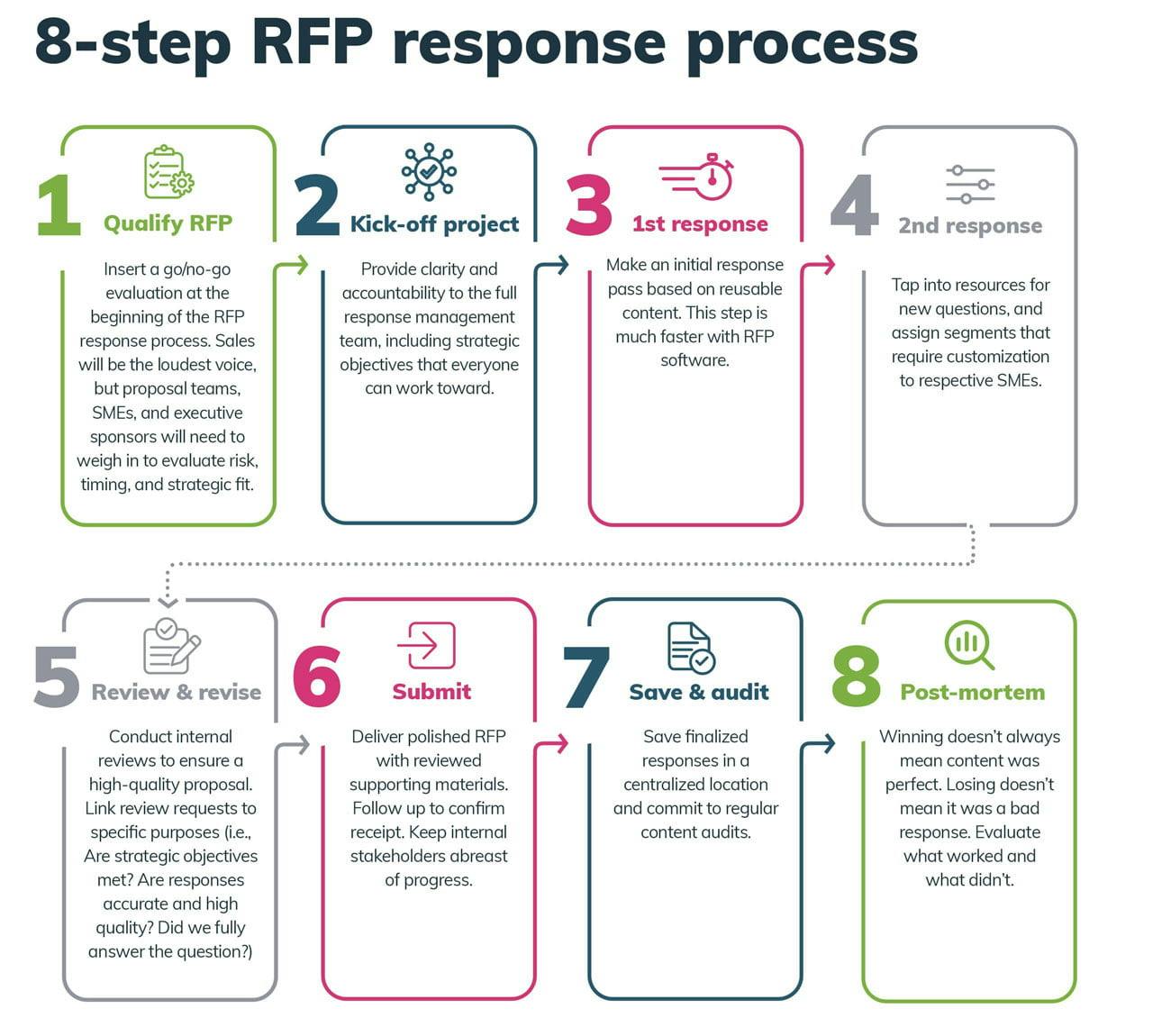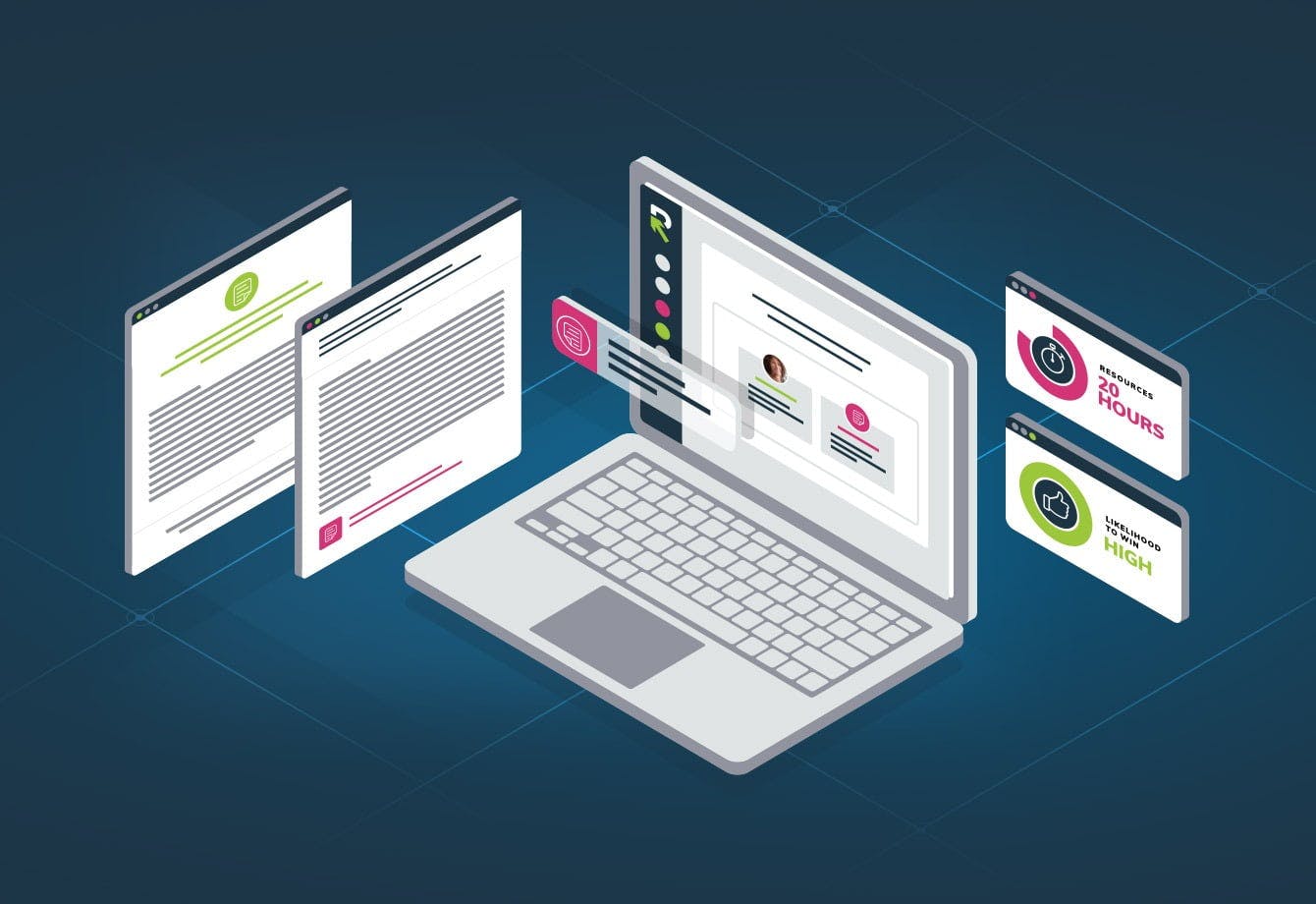There was a time, I suppose, when major company purchases were relatively straightforward. If a company wanted to buy supplies, for example, they would simply contact vendors or put out the word that they were seeking bids.
Then a salesperson answered the call with a detailed bid, including company information, product or service description, pricing, and timelines.
Sure, there were some security concerns, as hacking and overall bad actors have been around for a very long time. Still, the regulatory environment was less rigorous, and it was generally easier to track down subject matter experts (SMEs).
That’s not to say things were easy. Most early-day RFPs came from the government; enough said there, I assume. But response processes were somewhat less defined and usually handled by sales.
Today, $11 trillion of revenue comes from RFPs. Many companies have entire response departments. Although nearly every other department, including sales, has software to help them become more productive, only about 16% of organizations use RFP software.
Either organizations don’t see the viability in a robust RFP process, or it’s an issue of “why fix it if it ain’t broken.” The problem, though, is that it is broken. RFPs are tremendous revenue-generating opportunities, and a great RFP process can generate millions of dollars while saving valuable time and other company resources.
If you are leaving viable RFPs in the virtual dustbin due to lack of time, or your win rate is in the tank, you need RFP processes. Processes will help you determine which RFPs you want to answer as well as organize timelines, key players, etc. Read on to learn more about how you can set up RFP processes for your company.
What is an RFP process?
In short, an RFP process describes the way a company responds to an RFP. It should define how you decide which RFPs are worth your time, organize the project, consult with SMEs, and determine how to manage any new content produced during the response.
RFPIO’s response managers (yes, we answer RFPs too) use an 8-step response process which includes:

What makes a great RFP response process
The average RFP win rate is about 45%. A great RFP response process improves on that rate in a couple of ways—it allows you to zero in on winnable and profitable RFPs and spend less time on each response, thereby letting you focus on crafting winning bids for the desirable opportunities.
Benefits of a great RFP process
A great RFP process doesn’t just benefit the response team; it benefits the entire organization with higher win rates, more revenue, and an organized and accessible knowledge base.
Avoid missing or delaying opportunities
RFPs are like the lottery: you can’t win if you don’t play. If your RFP pipeline is backed up to the point where you’re missing or delaying viable opportunities, a great RFP process will help you break through the clogged pipeline by allowing you to triage opportunities and get the right RFPs into the right hands.
Higher win rate
If you’re responding to a lot of bids without the revenue to match, it’s time to focus on your win rate. An effective RFP response process lets you spend more time on viable RFPs and less time spinning your wheels.
Focus efforts in the right place
“You’ve got to know when to hold ’em, know when to fold ’em.” – Kenny Rogers
Do you play poker? I don’t, but I know enough about the game to know that if you go all-in on every hand, you’ll probably lose all your money early in the game. If you take a strategic approach, however, and only bet on the hands you think you could win, the odds tilt in your favor.
Your boss probably doesn’t want to hear this, but RFPs are a lot like poker. Indeed, there are very few royal flushes—or guaranteed wins—but laying your time and resources on the table for a less-than-viable RFP leaves you a lot less time and fewer resources for the ones you might win.
Learn to evaluate which RFPs fit with a go/no-go qualification system in place.
- Do you know the customer? – Do you have an existing relationship with the prospect, or did they choose to send you the RFP for specific reasons? If so, your chances are much better than if it’s a more open bidding process.
- Is yours the right company? – If your solution doesn’t fit the customer’s needs, you should pass. Even if you spend time trying to make their round peg requirements fit into your square hole solution, you’d be wasting the prospect’s time, and you could end up annoying them.
- Can you match their budget? – Pricing is a tricky tightrope. On the one hand, you want to win the bid, but on the other, the deal should be profitable for your company. If your SMEs in charge of pricing say they can’t fulfill the customer’s needs within a reasonable price range, listen to them.
- Can your company meet their needs? – Do you realistically have the time and resources to onboard and support the customer?
- Do you want the business? — Business opportunities are a two-way street. Does the company fit your product development or business strategy?
- Do you have the bandwidth to answer the RFP? – If you think you’re swamped now, the number of RFPs issued is increasing every year. Sometimes, even winnable RFPs have to take back seats to better opportunities.
Less time per proposal means more proposals
This is a no-brainer. If you answer RFPs in a streamlined, more efficient way, you will have more of that aforementioned bandwidth for more RFPs.
Revitalized internal knowledge
RFP response teams are perfectly positioned to become the gatekeepers of company knowledge. When they record and regularly audit answers in a centralized company knowledge base, it gives executives the information they need to make more informed decisions. It also provides quick answers to anyone who needs it, including other revenue-generating teams.
Team building
Team-building exercises are generally either fun or downright silly, not that downright silly can’t be fun. But you don’t have to fall backward into coworkers’ arms to find camaraderie. When a team works together toward a common goal, trust and friendships are bound to develop.
Even beyond that, RFP responses require input from multiple people spread across the organization. An effective response process helps tear down silos.
Generate more revenue
I saved this one for last because if your bids aren’t generating revenue, there’s really no point. A great response process helps you identify the opportunities that will increase revenue.
Why a company might want to reevaluate their response process
Maybe you know your response process isn’t working for you, but even if you feel it is, maybe there’s room for improvement. Here are four scenarios that should encourage you to take a deeper look at your processes:
- You hired a new proposal manager – A new proposal manager taking over is a great time to reevaluate your processes using fresh eyes.
- Your current process is—shall we say—lackluster – Is your current process winning bids for you? Is your team working hard but bored out of their minds answering questions they’ve responded to 1,000 times before? Are your processes scalable so you can win future bids?
- Your company merged with another – Which company has better results from their processes?
- There was a significant change in your business – Do you have new products to offer? Have your products changed? If so, your RFP Q&A pairs will change as well. Sometimes a clean break is in order. Introduce new processes to go with your new everything else.
Examples of high-quality RFP processes
All organizations benefit from high-quality RFP response processes, but not necessarily in the same ways. Here are a few real-world examples of our customers’ benefits after moving their processes to RFPIO.
- An insurance company proposal manager said about RFPIO, “When we realized we could finish the first draft of an RFI (request for information) in hours rather than days, it was like the clouds parted and the angels sang.”
- IBA, a medical device manufacturer in Belgium, increased its win rate by 15%.
- TOMIA, a software company, streamlined processes, and improved company collaboration.
- Genpact, a global professional services firm, dramatically improved proposal quality.
- Microsoft (I assume they need no introduction) estimates they saved $2.4 million in the first 18 months after implementing RFPIO.
- On average, it takes about 8 days to complete an RFP, and that’s when there’s a fairly sizable team. That’s about 8 RFPs per quarter. RFPIO helped this two-person team answered double that, 16, in the first quarter after implementation.
- Let’s cut to the chase. Your boss wants to know about ROI. Well, Crownpeak, a digital experience management platform, realized a whopping 6x return on investment with RFPIO.
Want to make your RFP process great?
Now that you know the importance of a great RFP response process, where do you start?
- Set goals – Companies talk a lot about customer pain points, but what are your pain points? Would you like a new RFP response process to decrease your response time? Could the quality of your responses improve? Are you being taken out of the running too quickly?
- Develop a checklist – My mother is a big list-maker. I’ve never been as organized as my mother, and I blame my lack of list-making. Be my mother. Here is a somewhat typical checklist, although yours might look a little different:
- Identify key stakeholders – Your stakeholders won’t be the same for each RFP, but having a list of stakeholders will save you from having to reestablish roles each time.
- What is your average timeline? – Having this as a benchmark will help you figure out where your bottlenecks lie.
- Get company buy-in – A new process is only as good as the number of people willing to adopt it.
- Figure out if an RFP is worth answering – See above.
- Locate and evaluate content – Most often, this is the most time-consuming part of the RFP process.
- Consider RFP software – Okay, I’m biased, but RFPIO wouldn’t exist without a real need for better RFP processes.
RFPIO is an ideal tool for RFP response processes.
- RFPIO cuts response time by an average of 40% by answering up to 80% of an RFP’s queries using machine learning.
- RFPIO simplifies data-driven decision-making with RFPIO’s customizable reporting dashboard.
- RFPIO’s industry-leading Content Library democratizes knowledge management organization-wide.
- RFPIO® LookUp gives any authorized user with a browser company knowledge at their fingertips, even if they are traveling or out in the field.
- RFPIO integrates with more of the apps you’re already using than any other response platform. Use RFPIO within your existing CRMs, sales enablement, productivity, and vendor assessment apps. Communicate with stakeholders using your company’s favorite communication tools. Your IT team will be relieved to know we offer the same SSO authentications your company already uses.
